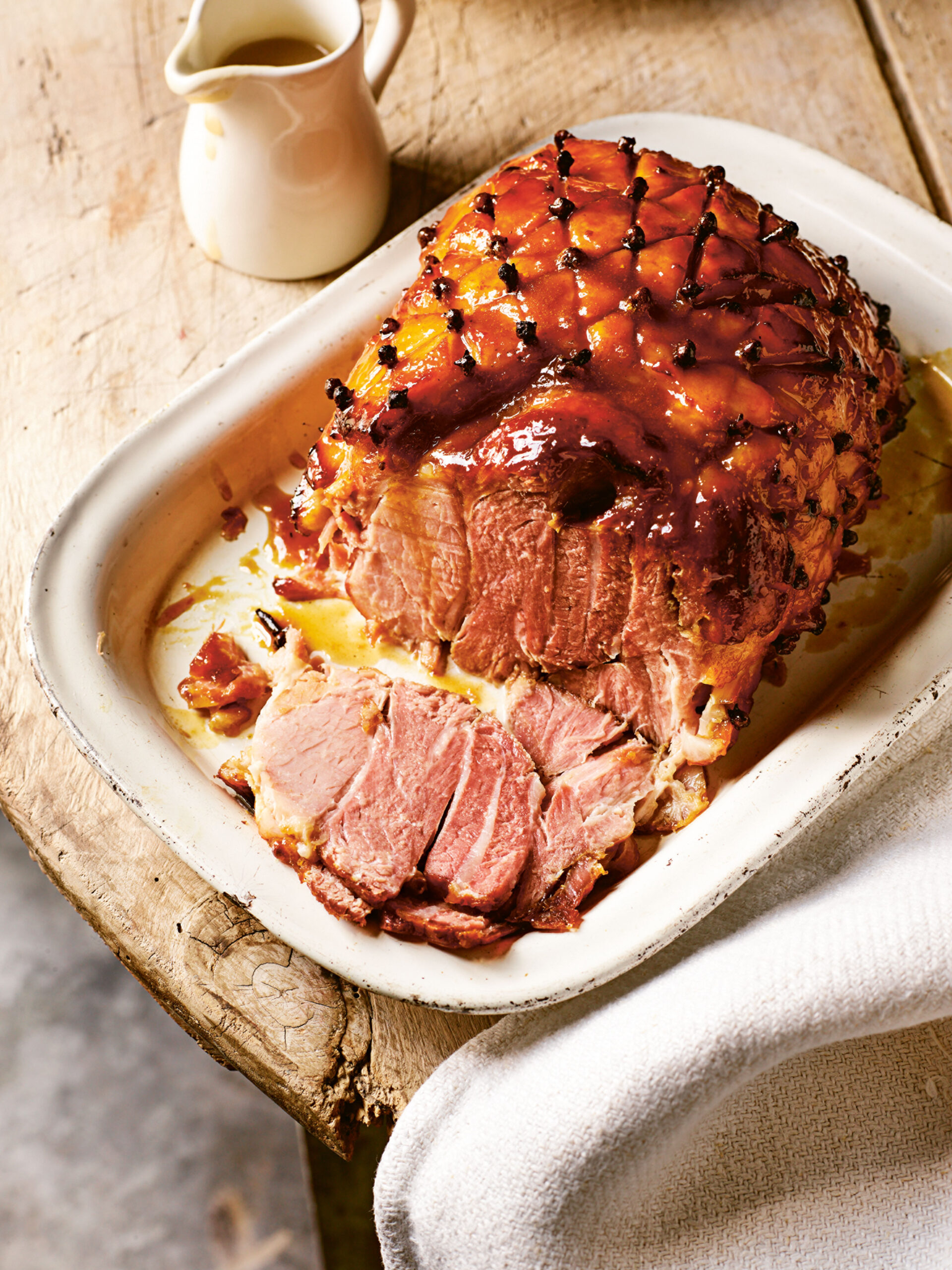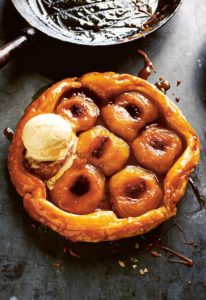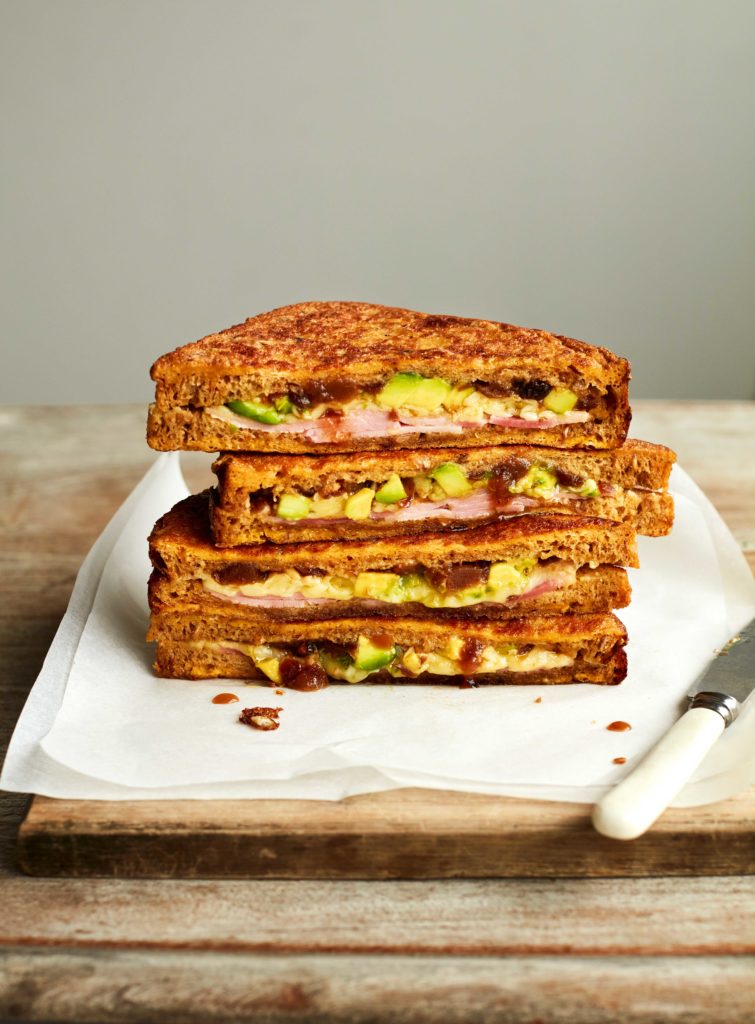Rick Stein’s Glazed Christmas Ham

Roasted in a sweet mustard glazed and served with a buttery gravy, this ham is a classic Christmas crowd-pleaser.
From the book
Introduction
Slices of hot ham with baked potatoes and salad are, I would suggest, almost as evocative of Christmas as turkey. My child memories are that we always had glazed ham served with spiced red cabbage on Christmas Eve, but since I became a fish cook I’ve adopted the continental enthusiasm for fish on that night, preferably turbot cooked in a turbot kettle and served with hollandaise sauce. Ham is now something to look forward to on Boxing Day. I have to admit to having spent four or five years of my life in the 80s and early 90s cooking about two hams a week for the deli I opened in Padstow, and never did I really work out how to stop my brown sugar and mustard glaze sliding off the ham in the hot oven and burning in the roasting tray. Now I put water in the tin so at least the mixture doesn’t burn and I can remove it.
Ingredients
| 1 x 2.8kg | unsmoked boned and rolled gammon |
| 600ml | cider |
| 1½ tsp | black peppercorns |
| 6 | cloves |
| ½ tsp | chilli flakes |
| 4 | bay leaves |
| For the glaze: | |
|---|---|
| 3 tsp | English mustard |
| 60g | soft brown sugar |
| 12-15 | cloves |
| For the gravy: | |
| About 1 litre | strained cooking liquor |
| 25g | unsalted butter |
| 1 tsp | cornflour (optional) |
Method
Some gammon can be quite salty. To test it, cut a thin slice from the end of the raw joint and add it to a pan of simmering water. Cook for about 5 minutes, then taste. If it’s too salty, soak the joint in cold water overnight and then drain.
Put the gammon in a large pan or stockpot and add the cider and enough water to cover the meat. Add the peppercorns, cloves, chilli flakes and bay leaves and bring to the boil.
Immediately turn down the heat so that the water is barely simmering and cook for about 11/2–2 hours or until the internal temperature when tested with a probe in the centre of the meat registers 65°C. Turn off the heat and allow the meat to cool in the water. Remove the cooled meat but don’t throw the liquor away.
Preheat the oven to 210°C/Fan 190°C. Mix the mustard and
sugar together in a small bowl. Using a sharp knife, remove any string from the meat and then take off the rind. Score the fat with a sharp knife in a diamond pattern and stud the meat with a clove at each intersection.
Set the meat on a wire rack or trivet in a roasting tin and add about 120ml of water to the tin. Then, using the back of a spoon or a brush, spread two-thirds of the glaze over the fat. Transfer to the preheated oven for 15 minutes, then brush with the remaining glaze. Top up the water if necessary and return to the oven for a further 10 minutes until browned.
Remove the tin from the oven and allow the ham to cool before carving, or serve hot with gravy. To make the gravy, reduce a litre or so of the strained cooking liquor by half, then whisk in 25g of unsalted butter. You may like to thicken the gravy slightly with a teaspoon of cornflour slaked in a little cold water.
By the way, you can use the strained cooking liquor (if not too salty) to make a tasty soup. Add soaked green or yellow split peas (see the cooking instructions on the packet) and a chopped onion and cook for about an hour or so until tender. Whizz in a blender, season to taste and add any chopped cuts of ham.
TIP: Ham cooking liquor is versatile in the same way as Thai fish sauce is for boosting flavour. I use it in tomato sauces, gravy and even sometimes in a fish soup.

















